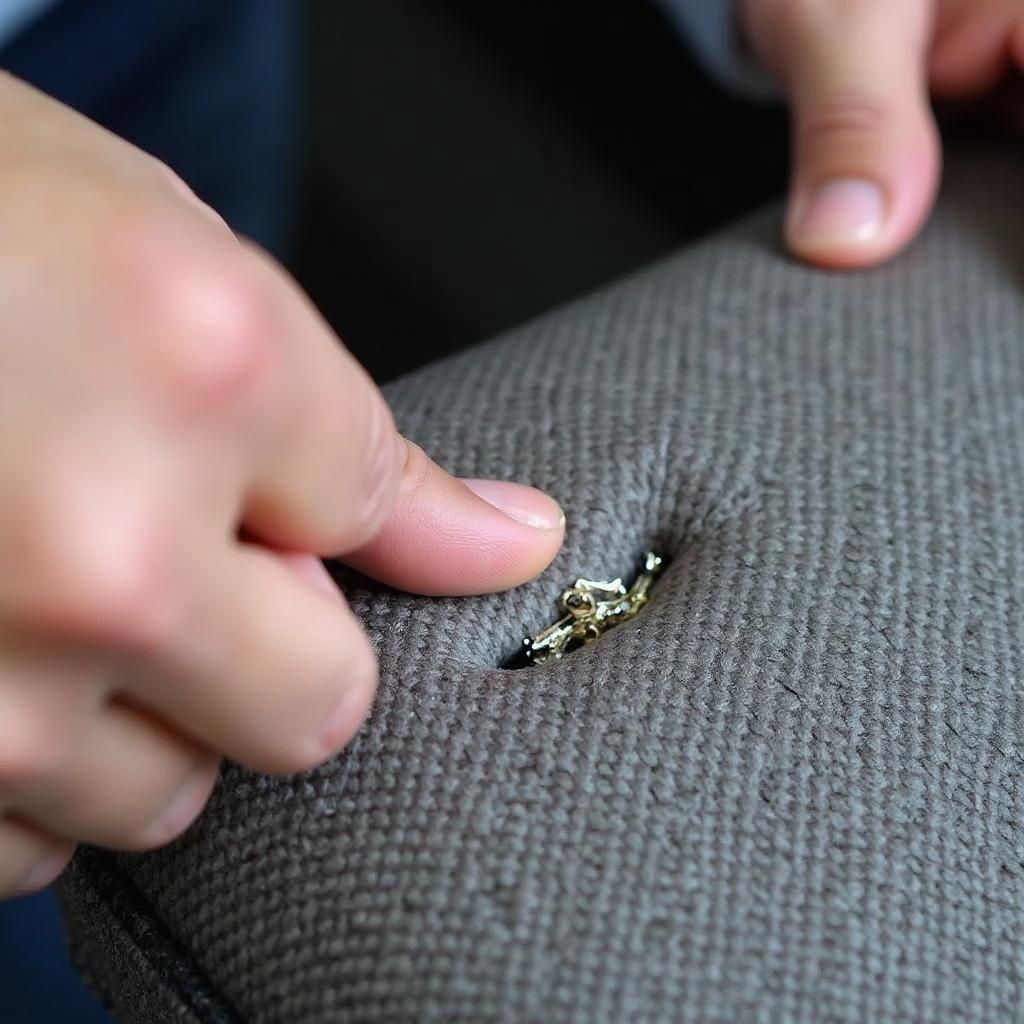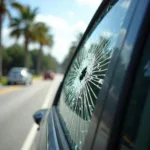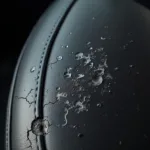A small cigarette burn might seem insignificant at first, but it can quickly depreciate your car’s value and become an eyesore. The good news is that fixing a small cigarette burn in your car seat is often possible without needing professional help. This guide will walk you through the steps on how to repair a small cigarette burn, restoring your car’s interior to its former glory.
Assessing the Damage: How Bad is the Burn?
Before you begin any repair, you need to assess the severity of the cigarette burn. Is it a small burn mark on the surface of the fabric or a deep hole that penetrated the cushioning?
- Surface Burns: These are the easiest to fix and often only require some cleaning and cosmetic touch-ups.
- Deep Burns: These are more challenging and may require patching, filling, or professional upholstery repair.
Gather Your Supplies: What You’ll Need for the Repair
Once you’ve assessed the damage, gather your supplies. Here’s a list of items you’ll likely need:
- Cleaning Solution: Use a specialized upholstery cleaner or a mild soap solution.
- Microfiber Cloths: These are great for cleaning and applying solutions without leaving lint behind.
- Tweezers: Useful for removing any loose fibers or debris from the burned area.
- Scissors: Only if you need to trim loose fabric around the burn.
- Upholstery Filler (if needed): Choose a color-matched filler to fill in deeper burns.
- Upholstery Patch (if needed): A small piece of matching upholstery fabric can be used for patching larger holes.
- Upholstery Adhesive (if needed): For securing patches.
Step-by-Step Guide: Repairing a Small Cigarette Burn
Follow these steps to effectively repair a small cigarette burn in your car seat:
-
Clean the Area: Start by cleaning the burned area and surrounding fabric with your chosen cleaning solution and a microfiber cloth. Gently rub the area to remove dirt, debris, and any melted material from the burn.
-
Remove Loose Fibers: Using tweezers, carefully remove any loose or charred fibers from the burn hole. Be gentle to avoid further damaging the fabric.
-
Fill the Hole (if needed): If the burn has created a hole, apply a small amount of color-matched upholstery filler to the affected area. Use a putty knife or your finger to smooth the filler evenly, ensuring it’s level with the surrounding fabric. Let it dry completely according to the manufacturer’s instructions.
-
Patching (if needed): If the burn area is large or the hole cannot be filled effectively, you may need to patch it. Cut a small piece of matching upholstery fabric slightly larger than the hole. Apply upholstery adhesive to the back of the patch and gently press it over the hole. Smooth out any air bubbles and ensure the patch is securely attached. Let it dry completely.
-
Final Touches: Once the filler or patch is dry, assess the repair. You can use a soft-bristled brush or a clean microfiber cloth to gently blend the repaired area with the surrounding fabric for a seamless finish.
Preventing Future Burns: Tips for Keeping Your Car Interior Safe
Prevention is key! Here are some tips to prevent future cigarette burns in your car:
- No Smoking Policy: The most effective way to prevent cigarette burns is to implement a strict no-smoking policy in your vehicle.
- Ashtrays: If smoking is unavoidable, always use designated ashtrays and ensure cigarette butts are properly extinguished.
- Regular Cleaning: Regularly cleaning your car’s interior can help minimize the risk of accidental burns.
When to Call a Professional: Knowing Your Limits
While this guide covers repairing small cigarette burns, some situations are best left to professionals. If the burn is extensive, has significantly damaged the seat’s structure, or you’re uncomfortable attempting the repair yourself, seek help from a professional upholstery repair specialist.
By following these steps, you can repair small cigarette burns in your car seat and restore your car’s interior to its former glory. However, remember that prevention is always better than cure. Implementing preventative measures can save you time, money, and the hassle of dealing with unsightly burns in the future.



